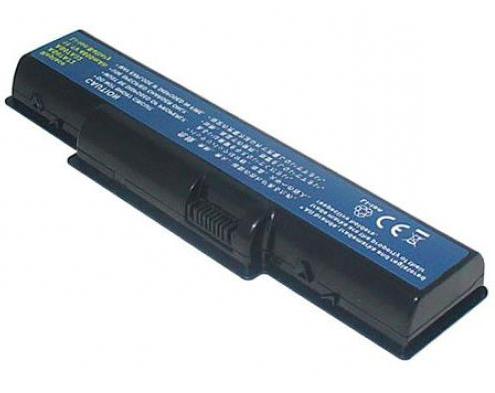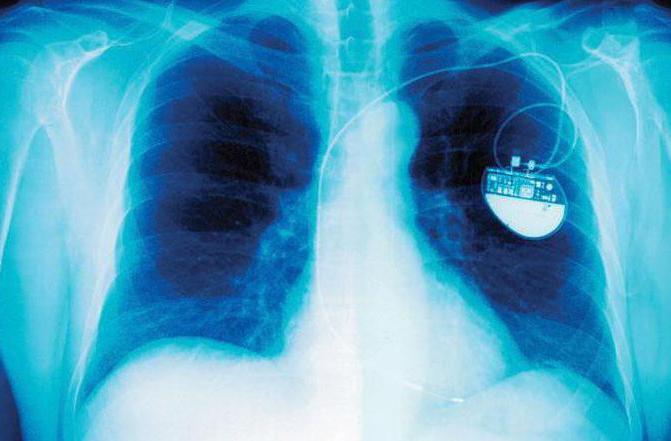Chemical current sources (HIT for short) are devices in which the energy of the redox reaction is converted into electrical energy. Their other names are an electrochemical cell, a galvanic cell , an electrochemical cell. The principle of their action is as follows: as a result of the interaction of two reagents, a chemical reaction occurs with the release of DC electric energy. In other current sources, the process of generating electricity occurs according to a multi-stage scheme. First, thermal energy is released, then it turns into mechanical energy and only after that into electrical energy . The advantage of HIT is the one-step process, that is, electricity is obtained immediately, bypassing the stages of obtaining thermal and mechanical energies.
History
How did the first current sources come about? Chemical sources received the name of the galvanic cells in honor of the Italian scientist of the eighteenth century - Luigi Galvani. He was a doctor, anatomist, physiologist and physicist. One of the directions of his research was the study of animal reactions to various external influences. The chemical method of generating electricity was discovered by Galvani by chance, during one of the experiments on frogs. He connected two metal plates to a bare nerve on a frog leg. In this case, muscle contraction occurred. Galvani's own explanation for this phenomenon was incorrect. But the results of his experiments and observations helped his compatriot Alessandro Volta in subsequent studies.
Volta outlined in his works the theory of the occurrence of electric current as a result of a chemical reaction between two metals in contact with the muscular tissue of a frog. The first chemical current source looked like a tank with saline solution, with plates of zinc and copper immersed in it.
On an industrial scale, HIT began to be produced in the second half of the nineteenth century, thanks to the Frenchman Leklansha, who invented the primary manganese-zinc element with salt electrolyte, named after him. A few years later, this electrochemical cell was improved by another scientist and was the only primary chemical source of current until 1940.
Device and principle of operation of HIT
The device of chemical current sources includes two electrodes (conductors of the first kind) and an electrolyte located between them (a conductor of the second kind, or an ionic conductor). At the border between them, an electronic potential arises. The electrode on which the oxidizing agent is oxidized is called the anode, and the one on which the oxidizing agent is reduced is called the cathode. Together with the electrolyte, they make up the electrochemical system.
A by-product of the redox reaction between the electrodes is the appearance of an electric current. During such a reaction, the reducing agent is oxidized and gives up the electrons to the oxidizing agent, which receives them and is thereby reduced. The presence of an electrolyte between the cathode and anode is a necessary condition for the reaction. If you simply mix powders from two different metals, no energy will be released, all the energy will be released in the form of heat. The electrolyte is needed to streamline the transition of electrons. Most often, in its quality, a saline solution or a melt acts.
Electrodes look like metal plates or gratings. When immersed in an electrolyte, an electric potential difference arises between them — an open circuit voltage. The anode tends to donate electrons, and the cathode tends to accept them. On their surface, chemical reactions begin. They stop when the circuit is opened, and also when one of the reagents is used up. The circuit is opened when one of the electrodes or electrolyte is removed.
The composition of electrochemical systems
Chemical current sources as oxygenizing agents use oxygen-containing acids and salts, oxygen, halogens, higher metal oxides, organo nitro compounds, etc. The reducing agents in them are metals and their lower oxides, hydrogen and hydrocarbon compounds. How electrolytes are used:
- Aqueous solutions of acids, alkalis, saline, etc.
- Non-aqueous solutions with ionic conductivity obtained by dissolving salts in organic or inorganic solvents.
- Melts of salts.
- Solid compounds with an ionic lattice in which one of the ions is mobile.
- Matrix electrolytes. These are liquid solutions or melts located in the pores of a solid non-conducting body - an electron carrier.
- Ion-exchange electrolytes. These are solid compounds with fixed ionic groups of the same sign. Ions of a different sign are mobile at the same time. This property makes the conductivity of such an electrolyte unipolar.
Galvanic batteries
Chemical current sources consist of galvanic cells - cells. The voltage in one of these cells is small - from 0.5 to 4V. Depending on the need, in a HIT, a galvanic battery consisting of several series-connected elements is used. Sometimes parallel or series-parallel connection of several elements is applied. Only the same primary cells or batteries are always included in the serial circuit. They must have the same parameters: electrochemical system, design, technological option and size. For parallel connection, the use of elements of different sizes is permissible.
HIT classification
Chemical current sources differ in:
- size
- construction;
- reagents;
- the nature of the energy-generating reaction.
These parameters determine the performance properties of the CIT, suitable for a particular application.
The classification of electrochemical elements is based on the difference in the principle of operation of the device. Depending on these characteristics, distinguish:
- Primary chemical current sources are single-acting elements. They have a certain supply of reagents, which is consumed during the reaction. After a full discharge, such a cell loses its working capacity. In another way, primary CHITs are called galvanic cells. It will be true and call them simply - an element. The simplest examples of a primary power source are AA batteries.
- Rechargeable chemical current sources - batteries (they are also called secondary, reversible CITs) are reusable elements. By passing current from the external circuit in the opposite direction through the battery after a full discharge, the reagents consumed are regenerated, again accumulating chemical energy (charging). Due to the ability to recharge from an external constant current source, this device is used for a long time, with interruptions in recharging. The process of generating electrical energy is called battery discharge. These HITs include batteries for many electronic devices (laptops, mobile phones, etc.).
- Thermal chemical current sources are continuous devices. In the process of their work, there is a continuous supply of new portions of reagents and the removal of reaction products.
- In the combined (semi-fuel) galvanic cells there is a supply of one of the reagents. The second is supplied to the device from the outside. The life of the device depends on the stock of the first reagent. Combined chemical sources of electric current are used as batteries if it is possible to restore their charge by passing current from an external source.
- HIT renewable are recharged mechanically or chemically. For them, it is possible to replace, after a full discharge of spent reagents, with new portions. That is, they are not continuous devices, but, like batteries, are periodically recharged.

Hit characteristics
The main characteristics of chemical current sources include:
- Open circuit voltage (NRC or discharge voltage). This indicator, first of all, depends on the chosen electrochemical system (a combination of a reducing agent, an oxidizing agent and an electrolyte). The NRC is also affected by the concentration of electrolyte, the degree of discharge, temperature, and more. NRC depends on the value of the current passing through the HIT.
- Power.
- Discharge current - depends on the resistance of the external circuit.
- Capacity - the maximum amount of electricity that the HIT gives out when fully discharged.
- Energy reserve - the maximum energy received when the device is completely discharged.
- Energy characteristics. For batteries, this is, above all, the guaranteed number of charge-discharge cycles without reducing the capacity or charge voltage (resource).
- Operating temperature range.
- Shelf life - the maximum allowable period of time between manufacture and the first discharge of the device.
- Service life - the maximum permissible total shelf life and work. For fuel cells, lifetimes in continuous and intermittent operation are important.
- Total energy delivered over the entire service life.
- Mechanical strength with respect to vibration, shock, etc.
- Ability to work in any position.
- Reliability.
- Easy to maintain.

Hit Requirements
The design of electrochemical cells should provide conditions conducive to the most efficient reaction. These conditions include:
- leakage prevention;
- uniform work;
- mechanical strength (including tightness);
- reagent separation;
- good contact between electrodes and electrolyte;
- current removal from the reaction zone to the external output with minimal losses.
Chemical current sources must meet the following general requirements:
- the highest values of specific parameters;
- maximum temperature interval of operability;
- the biggest stress;
- minimum unit cost of energy;
- voltage stability;
- charge safety;
- security;
- ease of maintenance, and ideally the lack of need for it;
- long service life.
HIT Operation
The main advantage of primary cells is the absence of the need for any maintenance. Before you start using them, it is enough to check the appearance and expiration date. When connecting, it is important to observe the polarity and check the integrity of the contacts of the device. More complex chemical current sources - batteries, require more serious care. The purpose of their service is to maximize the service life. Battery care is:
- maintaining cleanliness;
- open circuit voltage control;
- maintaining the electrolyte level (only distilled water can be used for topping up);
- monitoring electrolyte concentration (using a hydrometer - a simple device for measuring the density of liquids).
When operating galvanic cells, all requirements related to the safe use of electrical appliances must be observed.
Classification of HIT by electrochemical systems
Types of chemical current sources, depending on the system:
- lead (acid);
- nickel-cadmium, nickel-iron, nickel-zinc;
- manganese-zinc, copper-zinc, mercury-zinc, chlorine-zinc;
- silver-zinc, silver-cadmium;
- air metal;
- nickel-hydrogen and silver-hydrogen;
- manganese-magnesium;
- lithium etc.
Current use of HIT
Chemical current sources currently applied in:
- vehicles
- portable devices;
- military and space technology;
- scientific equipment;
- medicine (pacemakers).
Familiar examples of HIT in everyday life:
- batteries (dry batteries);
- rechargeable batteries of portable household appliances and electronics;
- uninterruptible power supplies;
- car batteries.
Especially widely used are lithium chemical current sources. This is due to the fact that lithium (Li) has the highest specific energy. The fact is that it differs in the most negative electrode potential among all other metals. Lithium-ion batteries (LIA) are ahead of all other ChITs in terms of specific energy and operating voltage. Now they are gradually mastering a new area - road transport. In the future, the development of scientists related to the improvement of lithium batteries will move in the direction of ultra-thin designs and large heavy-duty batteries.